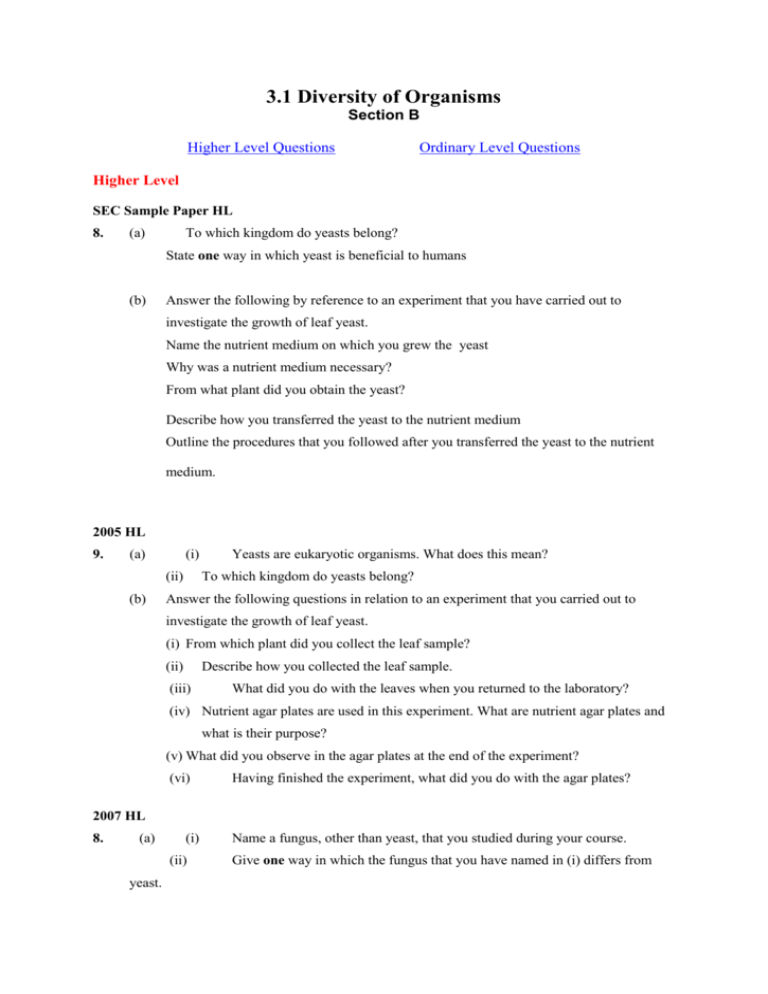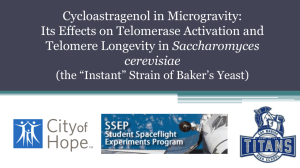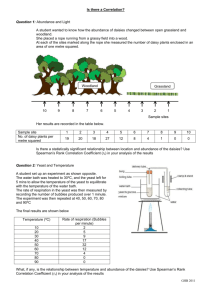Microbiology Section B
advertisement

3.1 Diversity of Organisms Section B Higher Level Questions Ordinary Level Questions Higher Level SEC Sample Paper HL 8. (a) To which kingdom do yeasts belong? State one way in which yeast is beneficial to humans (b) Answer the following by reference to an experiment that you have carried out to investigate the growth of leaf yeast. Name the nutrient medium on which you grew the yeast Why was a nutrient medium necessary? From what plant did you obtain the yeast? Describe how you transferred the yeast to the nutrient medium Outline the procedures that you followed after you transferred the yeast to the nutrient medium. 2005 HL 9. (a) (i) (ii) (b) Yeasts are eukaryotic organisms. What does this mean? To which kingdom do yeasts belong? Answer the following questions in relation to an experiment that you carried out to investigate the growth of leaf yeast. (i) From which plant did you collect the leaf sample? (ii) Describe how you collected the leaf sample. (iii) What did you do with the leaves when you returned to the laboratory? (iv) Nutrient agar plates are used in this experiment. What are nutrient agar plates and what is their purpose? (v) What did you observe in the agar plates at the end of the experiment? (vi) Having finished the experiment, what did you do with the agar plates? 2007 HL 8. (a) (i) (ii) yeast. Name a fungus, other than yeast, that you studied during your course. Give one way in which the fungus that you have named in (i) differs from (b) Answer the following questions in relation to your investigation of the growth of leaf yeast. (i) It was necessary to use a nutrient medium. What is a nutrient medium? (ii) Name the nutrient medium that you used. (iii) The nutrient medium should be sterile. Explain the underlined term. (iv) Describe, in words and/or labelled diagram(s), how you conducted the investigation. (v) What was the result of your investigation? 2010 HL 8. (b) For which purpose did you use each of the following in the course of your practical studies? (i) Methylene blue or iodine solution when examining cells with the microscope. (ii) An aquatic plant such as pondweed rather than a terrestrial plant when investigating the rate of photosynthesis. (iii) 1. Washing-up liquid or other detergent while extracting DNA from plant tissue. 2. (iv) Freezer-cold ethanol while extracting DNA from plant tissue. 1. Antiseptic wash solution in the investigation of the growth of leaf yeast on agar plates. 2. (v) Petroleum jelly in the investigation of the growth of leaf yeast on agar plates. 1. 2. Biuret solution or alkaline copper sulphate in food testing. Brown paper or Sudan III in food testing. 2012 HL 8. (a) (i) Are fungi prokaryotic or eukaryotic? (ii) Name one structure in plant cells not found in fungi. (b) (i) What is the purpose of using agar when growing fungi or bacteria in the laboratory? (ii) Suggest one reason why leaf yeasts are more plentiful in July than in March. (iii) Describe how you introduced the leaf yeasts into agar plates. (iv) What was the precise purpose of a control in this investigation? (v) How did you recognise the leaf yeasts when they appeared on the agar? (vi) How did you safely dispose of the plates at the end of the investigation? (vii) Using the axes below, draw a graph to show how the number of leaf yeasts varied following their introduction into the plate. Ordinary Level 2008 OL 7. It is important to use sterile apparatus when working with micro-organisms. (a) (i) What is meant by sterile? (ii) How may apparatus be sterilised? (b) Answer the following questions about an investigation that you carried out to show the growth of leaf yeast. (i) Name the container in which you grew the leaf yeast (ii) What was present in this container to provide food for the yeast? (iii) Describe how you put leaf yeast into the container. (iv) How long did it take for the leaf yeast to appear? (v) Describe the appearance of the leaf yeast in the container. 2011 OL 7. (a) (b) leaf yeast. Draw a labelled diagram of a single, reproducing, yeast cell. Answer the following questions in relation to your investigation into the growth of (i) From what plant did you obtain the yeast? (ii) Name the nutrient medium on which you grew the yeast. (iii) Outline the steps you followed to get the yeast cells onto the nutrient medium. (iv) How long did it take for the yeast to become visible on the nutrient medium? (v) How did you recognise the yeast? (vi) Describe one aseptic technique you carried out during this investigation.






